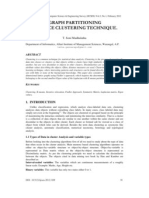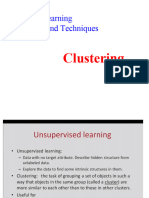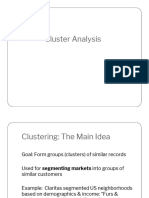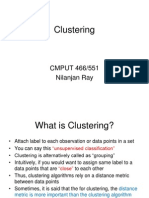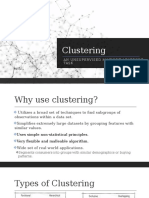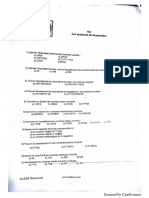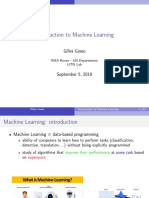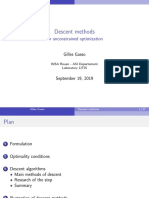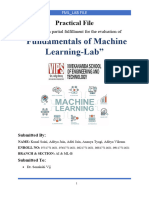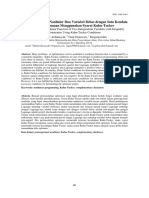0% found this document useful (0 votes)
90 views29 pagesClustering Techniques Overview
The document discusses clustering methods, including hierarchical clustering and k-means clustering. It defines clustering as grouping samples into homogeneous categories to structure data. Hierarchical clustering works by iteratively merging the closest clusters into larger clusters from the bottom up. K-means clustering groups samples into k clusters by minimizing distances between samples and cluster centroids. The document provides details on different clustering algorithms, measures of cluster quality, and applications of clustering.
Uploaded by
Adil HaCopyright
© © All Rights Reserved
We take content rights seriously. If you suspect this is your content, claim it here.
Available Formats
Download as PDF, TXT or read online on Scribd
0% found this document useful (0 votes)
90 views29 pagesClustering Techniques Overview
The document discusses clustering methods, including hierarchical clustering and k-means clustering. It defines clustering as grouping samples into homogeneous categories to structure data. Hierarchical clustering works by iteratively merging the closest clusters into larger clusters from the bottom up. K-means clustering groups samples into k clusters by minimizing distances between samples and cluster centroids. The document provides details on different clustering algorithms, measures of cluster quality, and applications of clustering.
Uploaded by
Adil HaCopyright
© © All Rights Reserved
We take content rights seriously. If you suspect this is your content, claim it here.
Available Formats
Download as PDF, TXT or read online on Scribd
/ 29

































